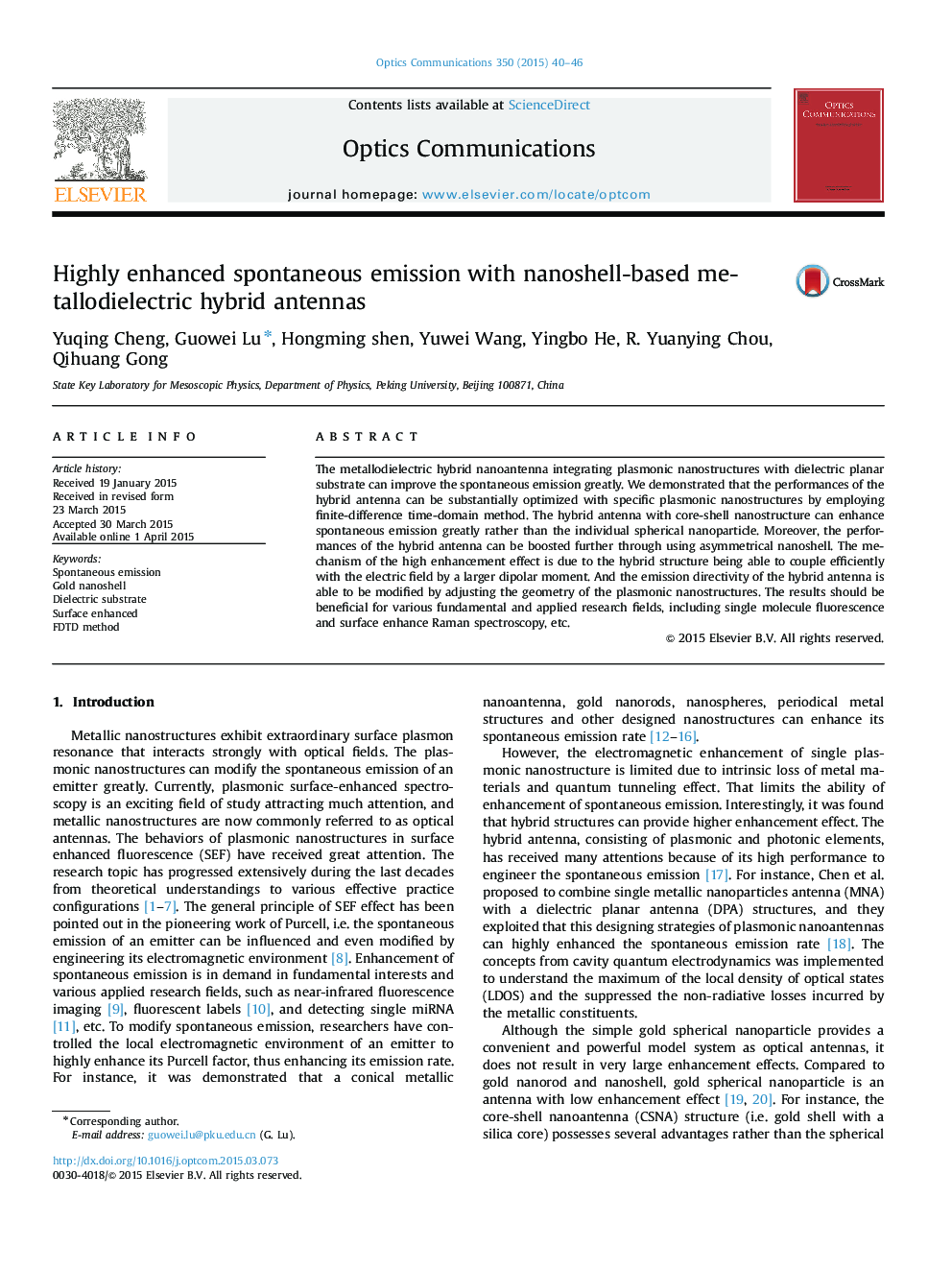| Article ID | Journal | Published Year | Pages | File Type |
|---|---|---|---|---|
| 1533968 | Optics Communications | 2015 | 7 Pages |
The metallodielectric hybrid nanoantenna integrating plasmonic nanostructures with dielectric planar substrate can improve the spontaneous emission greatly. We demonstrated that the performances of the hybrid antenna can be substantially optimized with specific plasmonic nanostructures by employing finite-difference time-domain method. The hybrid antenna with core-shell nanostructure can enhance spontaneous emission greatly rather than the individual spherical nanoparticle. Moreover, the performances of the hybrid antenna can be boosted further through using asymmetrical nanoshell. The mechanism of the high enhancement effect is due to the hybrid structure being able to couple efficiently with the electric field by a larger dipolar moment. And the emission directivity of the hybrid antenna is able to be modified by adjusting the geometry of the plasmonic nanostructures. The results should be beneficial for various fundamental and applied research fields, including single molecule fluorescence and surface enhance Raman spectroscopy, etc.
Graphical abstractThe core-shell (gold shell with a silica core) metallodielectric hybrid antennas can enhance the single-molecule emission intensity greatly.The enhancement of spontaneous emission is in demand in fundamental interests and various applied research fields. However, the electromagnetic enhancement of single plasmonic nanostructure is limited due to intrinsic loss of metal materials and quantum tunneling effect which also limits the ability of enhancement of spontaneous emission. Interestingly, it was found that hybrid structures can provide higher enhancement effect.This study is about a kind new type of optical antenna to control spontaneous emission of single emitter, i.e. a metallodielectric hybrid nanoantenna integrating plasmonic nanostructures with dielectric planar substrate which can improve the spontaneous emission greatly.We demonstrated that the performances of the hybrid antenna can be substantially optimized with specific plasmonic nanostructures by employing finite-difference time-domain method. The hybrid antenna with core-shell nanostructure can enhance spontaneous emission greatly rather than the individual spherical nanoparticle. Moreover, the performances of the hybrid antenna can be boosted further through using asymmetrical nanoshell.The mechanism of the high enhancement effect is due to the hybrid structure being able to couple efficiently with the electric field by a larger dipolar moment. And the emission directivity of the hybrid antenna is able to be modified by adjusting the geometry of the plasmonic nanostructures.The results should be beneficial for various fundamental and applied research fields, including single molecule fluorescence and surface enhance Raman spectroscopy, etc.Figure optionsDownload full-size imageDownload high-quality image (196 K)Download as PowerPoint slide
